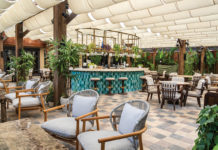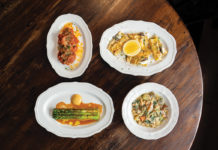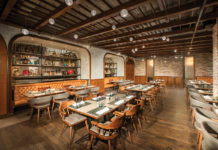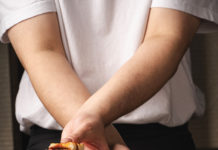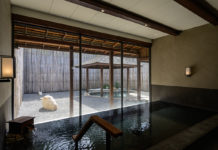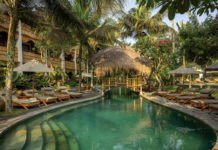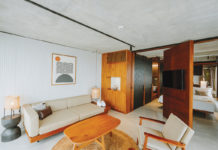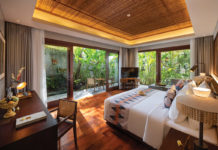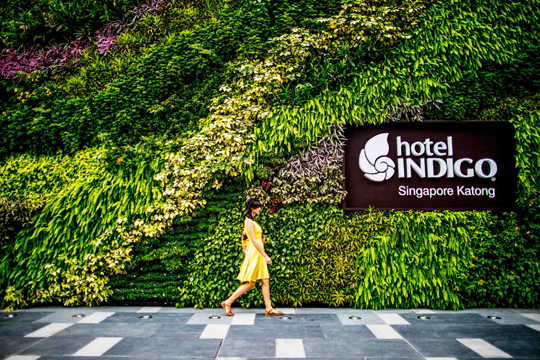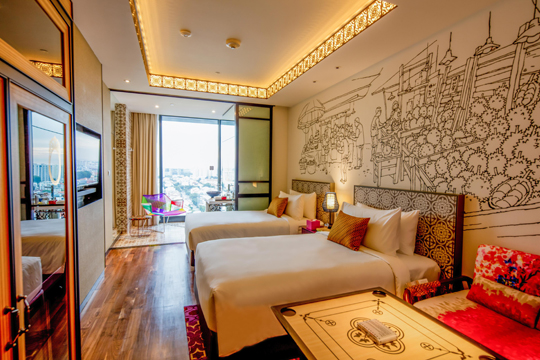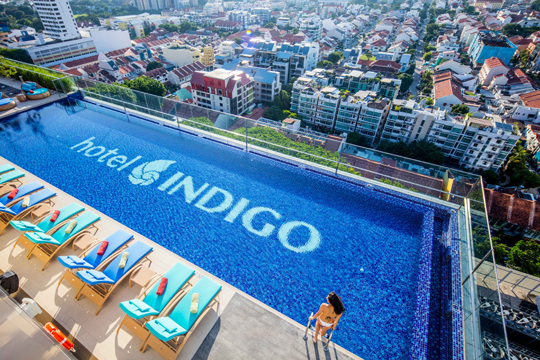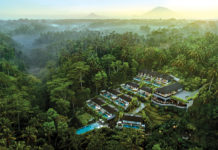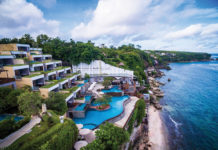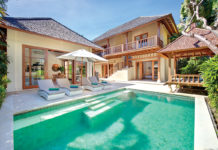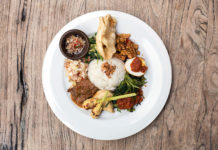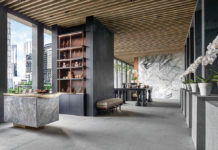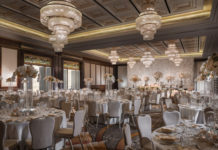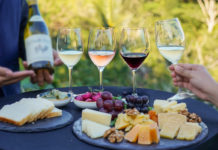It was an era of exploration and discovery; a time when maritime expansion coloured the southernmost tip of continental Asia, where major European powers staged stare-downs and vied for dominance. A high-ranking British statesman’s vision brought relative peace as he planned to establish a nation that would be one of the region’s most important commerce and military hubs. The vision included a coastal city that would thrive at the eastern coast of this new island that would later be called Singapore, a city that would nurture plantations, busy shipyards, beach-side retreats, mighty mansions for the privileged few, and lively commercial activities for the locals. And so the old Tanjong Katong area stood to witness the birth of a nation. The visionary Stamford Raffles had created an area attractive to nobles and commoners alike. Wealthy Straits Chinese, Europeans and Jews built mansions, hotels and recreation clubs along the beach for weekend retreats. Plantations thrived – rubber, coconut, gambier, banana – further enhancing population growth in the Katong area.
Inevitably, crime rates rose as criminals and warring gangs encroached on the sprawling streets. A police station was built on the land belonging to Hokkien businessman Chew Joo Chiat to uphold the law and keep the peace, and while Katong today is free of any triad’s clutch, the longstanding police station was recently transformed into a different kind of peaceful retreat. It remains, however, an iconic part of the neighbourhood that strives to preserve the glorious Peranakan culture of Katong.
Θ Hotel Indigo Singapore Katong
Paying full respect to Katong’s rich history and culture, Hotel Indigo Singapore Katong helps preserve the local story of the neighbourhood by integrating fundamental Peranakan elements into its design. Old Peranakan homes are divided into activity zones, which typically start with a very appealing guest room, followed by a common room or living area, and then a bathroom.
This is reflected in the meticulously designed 30-sq.m. guest rooms that take guests from the living room to the bedroom through to the spa-inspired bathroom, which features aromatherapeutic toiletries from Biology Smart Skincare. Furniture design is suitably a mix of old and new, with a minibar fashioned after traditional display cabinets, a carrom board as a coffee tabletop, a sofa inspired by cane furniture, and a modern marble sink and vanity counter with an old-fashioned Singer sewing machine making up its lower part. Peranakan art is also preserved in wall murals painted differently in each room, a custom-made bathtub with a dragon motif drawn from traditional clay jars, and patchwork rug designs.
Located in the eastern region of Singapore and a 15-minute drive from Changi Airport and the Central Business District, the 131-room at Hotel Indigo Singapore Katong integrates a modern multi-storey building with the architecturally significant heritage building – the former Joo Chiat Police Station, constructed in 1928 and characteristic of government buildings of the time to serve the needs of the surrounding Katong community.
Θ Blending with the Neighborhood
Designed by renowned architects Ong & Ong and multi-disciplinary architectural practice eco.id Architects and Design Consultancy, Hotel Indigo Singapore Katong thoughtfully incorporates highlights of the Katong neighbourhood story into the hotel’s creative design.
This includes a feature wall at the hotel’s reception comprising a collage of intricate Peranakan ceramic patterns and colourful pop-art renditions of water jars, intriguing knick-knacks from a different age spread around the hotel, as well as a pop-up mama stall reminiscent of small convenience stalls often located in housing estates of the 1960s, displaying local artisans’ crafts in the hotel’s pavilion.
This philosophy of bringing the local neighbourhood to life in the property extends to the hotel’s food and beverage offering. Hotel Indigo Katong’s all-day dining restaurant, Baba Chews Bar and Eatery, serves authentic modern and traditional cuisine from the Malacca Straits, as well as a delectable selection of Western favourites. It also offers locally inspired food such as ayam buah keluak and foie gras tau kwa pau, coffee from beans roasted by local specialty coffee roasters Common Man Coffee Roasters, tea from TWG Tea, and innovative local cocktails.
Θ Defining Peranakan
We’ve used this word a lot in this page, but what does Peranakan really mean? In a nutshell, it is a culture formed and enriched by the best features of multiple cultures south of Indo-China. Peranak culture was formed when Chinese migrants settled down with local women, thus fusing the Chinese way of life with Southeast Asian and Western customs in the Malay Peninsula. It is a thriving culture with longstanding heritage stories stretching centuries back, further even than the foundation of Singapore itself. Peter Wee, a prominent member of the Katong neighbourhood and a respected figure of the community, spent more than 40 years building an awe-inspiring collection of antiques and family heirlooms, such as furniture, shoes and porcelain, jewellery, and prized fabric. Each and every one of these trinkets is valuable evidence of Peranakan culture because of the story behind them.
“It is a way of bringing back into the present. Let’s say you inherit a jewel from your parents. The next generation would only see it as another piece of old jewellery. But that trinket has now become more valuable because it belonged to someone in the culture, and that it is linked to its history, its culture, and its heritage, which supersedes its material value, “ Peter remarked. Every single item in his collection has a story, and Peter Wee knew all of them by heart.


